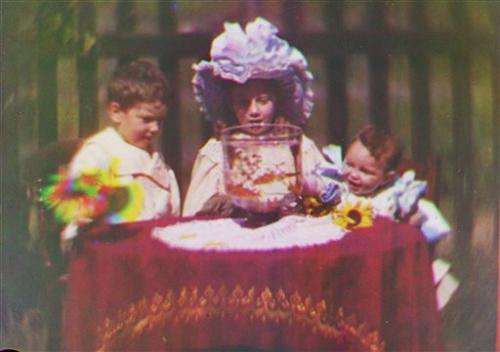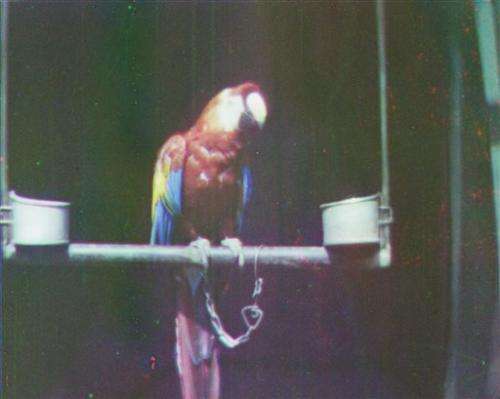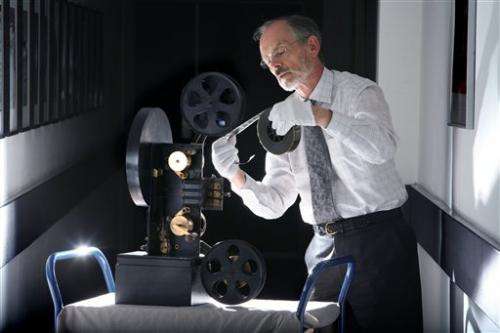UK museum revives first-ever film shot in color

(AP)—The earliest movies known to be shot in color have been revived by film archivists, who on Wednesday gave an audience at London's Science Museum a glimpse at cinema's first attempts to show us the world as we see it.
The obscure film segments were long considered failed prototypes, blurry flickers of color seen by no more than a handful of people before being consigned to an archive. But the National Media Museum in the northern England city of Bradford said digitization had effectively rescued the footage, unlocking remarkably modern-looking images created more than a century ago.
The scenes, screened at the Science Museum, ranged from roughly 5 to 40 seconds and showed a parrot, a London street scene, and three smiling children sitting around a table covered with a burgundy cloth batting at a goldfish bowl with large sunflowers.
"No one really has seen it until more or less today," said Michael Harvey, the Media Museum's curator of cinematography. "Look at the age of it. Here you've actually got color film from the early Edwardian period."
He said he hoped the movies would change people's perceptions of "what was possible back then." The film is slightly jerky but of decent quality. With the exception of the kids' frilly turn-of-the-century clothes and some mild discoloration, the sun-drenched clip of children playing might have been something shot by a baby boomer in his or her back yard with a 1970s Minolta camera.

Experts have dated the movie segments back to 1901 or 1902, when cinema was still in its infancy and inventors on both sides of the Atlantic were racing to produce ever-more realistic films. American inventor Thomas Edison led the way with peep-show-like Kinetoscope; the Lumiere brothers had wowed French audiences with moving images projected onto screens in 1895. The next challenge was to shoot a film in color.
That was no mean feat.
Working in London, inventor-photographer Edward Turner devised a complex, three-color process which would shoot black-and-white negatives through red, green and blue filters alternating in rapid succession. The idea was to project three differently filtered frames at a time on to a screen to create the illusion of a single, colorful movie.
In theory, anyway.
In practice the timing of the filters and distance from the screen had to be perfectly calibrated or the movie became "a horrible mess," according to Bryony Dixon, the curator of silent film at the British Film Institute's National Archive.
Turner never quite got the hang of the process, and when he died of a heart attack in 1903 his footage was passed on to American film entrepreneur, Charles Urban, who partnered with film pioneer George Albert Smith to develop a modified (and much more successful) system, dubbed Kinemacolor, in 1906.

Harvey said that Urban donated Turner's footage to the London Science Museum in 1937, where it stayed until about four years ago, when it was sent to the National Media Museum. Experts digitized the footage, finally allowing it to be shown.
Dixon noted that earlier films had been colored artificially—sometimes by painting right onto the black-and-white film—but said that the movies displayed Wednesday were "the first natural working color film in the world."
Film historian Mark Cousins said in an email that he was excited not by the technology or what he described as the "firstism issue," but by what he said might be called "the drive to beauty in the early inventors of cinema."
"They saw from the start that cinema could make you gasp at the beauty of a fish or a sunflower," he said.
Copyright 2012 The Associated Press. All rights reserved. This material may not be published, broadcast, rewritten or redistributed.















